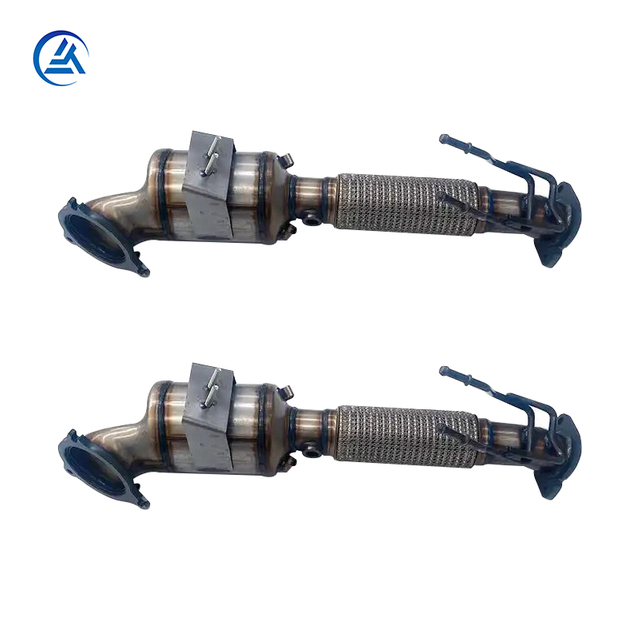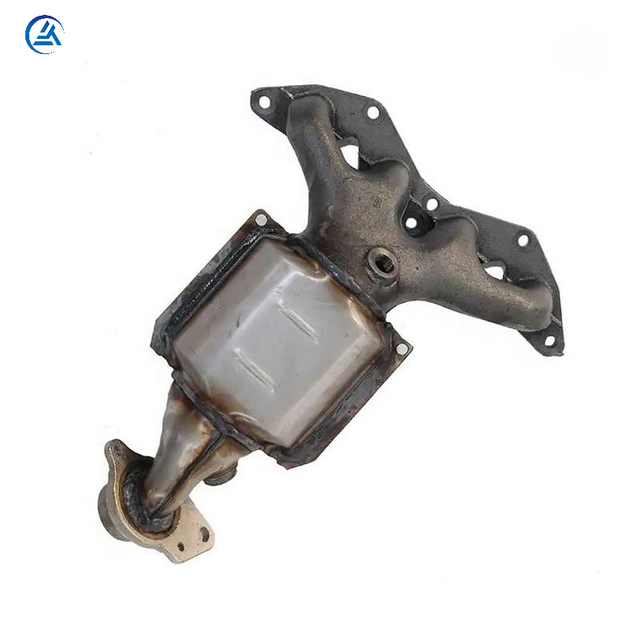Is your car acting sluggish? Does it smell like rotten eggs? A bad catalytic converter might be the cause. The catalytic converter helps reduce harmful car emissions. If it's not working properly, it can lead to engine problems, lower fuel efficiency, and environmental damage.
In this post, you’ll learn how to identify a failing catalytic converter and why replacing it is important for your car’s health.
What is a Catalytic Converter?
A catalytic converter is a vital component in your vehicle’s exhaust system. It helps reduce harmful emissions by converting pollutants in the exhaust gases into less harmful substances. These pollutants, like carbon monoxide and hydrocarbons, are broken down into carbon dioxide and water. Catalytic converters are typically made of precious metals like platinum, palladium, and rhodium, which act as catalysts to drive these chemical reactions.
Why is the Catalytic Converter Important?
The catalytic converter plays a key role in keeping the air clean by reducing harmful emissions that are produced during the engine's combustion process. Without it, your car would emit a lot more harmful gases, which is harmful to both the environment and your health. It also helps your car pass emissions tests, which are required in many states. If the catalytic converter is not working properly, it could lead to engine performance issues, higher emissions, and even engine damage.

Common Signs of a Failing Catalytic Converter
If your catalytic converter is malfunctioning, it will show up in several noticeable ways. Here are the top signs that your catalytic converter may need to be repaired or replaced:
1. Check Engine Light
One of the first signs that your catalytic converter is bad is the check engine light turning on. Modern vehicles are equipped with sensors that monitor the functionality of the catalytic converter. If the sensors detect a problem, they will trigger the check engine light. This could be due to inefficient performance of the converter, often indicated by a trouble code like P0420.
2. Poor Acceleration and Power Loss
A clogged catalytic converter can create excessive backpressure in your exhaust system, making it harder for the engine to expel exhaust gases. This causes a significant loss in engine power. If you notice that your vehicle struggles to accelerate, especially when you push the gas pedal, it might be a sign that the catalytic converter is clogged and impeding your engine's performance.
3. Sulfur Smell or Rotten Egg Odor
If your catalytic converter is malfunctioning, you might notice a sulfur-like smell coming from the exhaust, often described as the smell of rotten eggs. This odor occurs when the converter is not processing the exhaust gases properly, particularly the sulfur compounds. The smell indicates that your catalytic converter may be failing and should be replaced.
4. Decreased Fuel Efficiency
A clogged catalytic converter can prevent your engine from running efficiently. This inefficiency leads to poor fuel economy, meaning you'll need to fill up your gas tank more often than usual. If you notice a significant decrease in miles per gallon (MPG), your catalytic converter might be the culprit.
5. Rattling Noise
A failing catalytic converter can cause a rattling sound, especially when the car is idling or when the engine revs up. This noise is caused by broken or damaged internal components, like the catalyst material inside the converter. If you hear this noise, it could indicate that the converter’s structure is compromised.
6. Engine Misfires
A bad catalytic converter can also lead to engine misfires, which occur when the engine fails to fire properly. This happens because the converter can't fully process the exhaust gases, leading to incomplete combustion. Misfires will often result in poor performance and trouble starting the car.
7. Failed Emissions Test
One of the most common reasons people discover a bad catalytic converter is after failing an emissions test. Since the catalytic converter helps filter out harmful emissions, a malfunctioning converter can cause your car to fail the emissions test. If your vehicle fails this test, you will likely need to replace the catalytic converter.

How to Diagnose a Bad Catalytic Converter
If you suspect your catalytic converter is bad, there are several methods you can use to confirm it:
1. Visual Inspection
The first step in diagnosing a bad catalytic converter is to perform a visual inspection. Look for signs of damage, rust, or obvious physical wear. A cracked or physically damaged converter may need to be replaced immediately.
2. Temperature Test
You can check the temperature of the catalytic converter using an infrared thermometer. Measure the temperature at the inlet and outlet of the converter. If the outlet is cooler than the inlet, the converter may be clogged and not working efficiently.
3. Backpressure Test
A backpressure test measures the pressure in the exhaust system. High backpressure can indicate a clogged catalytic converter. This test requires a mechanic to use a special tool to measure the exhaust pressure, which helps determine if the converter is obstructed.
4. O2 Sensor Test
The oxygen sensors located before and after the catalytic converter help monitor the effectiveness of the converter. If the downstream sensor (after the converter) shows an abnormal reading, it could indicate that the converter is not working properly.
5. Vacuum Gauge Test
A vacuum gauge can be used to check for signs of a clogged catalytic converter. Attach the gauge to a vacuum port, and if the reading drops when you rev the engine, it could mean there’s a blockage in the converter.

What to Do If Your Catalytic Converter is Bad
If your catalytic converter is failing, the best course of action is to replace it. Driving with a bad converter can cause further damage to the engine and exhaust system, and it will affect the car's performance, fuel efficiency, and environmental impact.
If you're dealing with a clogged converter, it’s typically impossible to clean it. The only effective solution is to replace it with a new one. While catalytic converters are expensive, they are essential for your vehicle’s overall functionality and for passing emissions tests.
How to Replace a Catalytic Converter
Replacing a catalytic converter is a job that requires mechanical skill, and it’s best done by a professional. However, if you decide to tackle the job yourself, you'll need a few tools and the proper replacement part.
Here’s a general guide for replacing a catalytic converter:
Lift the Vehicle: Use a jack and jack stands to raise the car safely.
Disconnect the Oxygen Sensors: You’ll need to unplug the oxygen sensors connected to the converter.
Remove the Old Converter: Use a wrench or socket to disconnect the bolts holding the converter in place. You may need to remove the heat shield.
Install the New Converter: Position the new catalytic converter in place and secure it with bolts. Reinstall the oxygen sensors and heat shield.
Check for Leaks: After installation, start the car and check for exhaust leaks.
Conclusion
Recognizing the signs of a bad catalytic converter early can save you from costly repairs and prevent further engine damage. From the check engine light to poor acceleration, these symptoms shouldn't be ignored. If you notice any of them, it’s crucial to have your vehicle inspected and the converter replaced if necessary.
At Antian New Materials, we provide high-quality materials for automotive components, including catalytic converters, ensuring your vehicle runs smoothly and efficiently. Don’t wait for your engine to fail—get your catalytic converter checked and replaced today for better performance and cleaner emissions.
FAQ
Q: How do I know if my catalytic converter is bad?
A: Common signs of a bad catalytic converter include a check engine light, poor acceleration, sulfur smell, or rattling sounds from the exhaust.
Q: Can I drive with a bad catalytic converter?
A: It's not recommended. Driving with a bad converter can damage your engine further and reduce performance.
Q: How much does it cost to replace a catalytic converter?
A: Replacement costs range from \$500 to \$2,000, depending on the make and model of your car.
Q: Can I clean a clogged catalytic converter?
A: While some products claim to clean clogged converters, the only guaranteed fix is to replace it.
Q: How long does a catalytic converter last?
A: A catalytic converter can last up to 10 years, depending on your vehicle’s maintenance and driving conditions.













